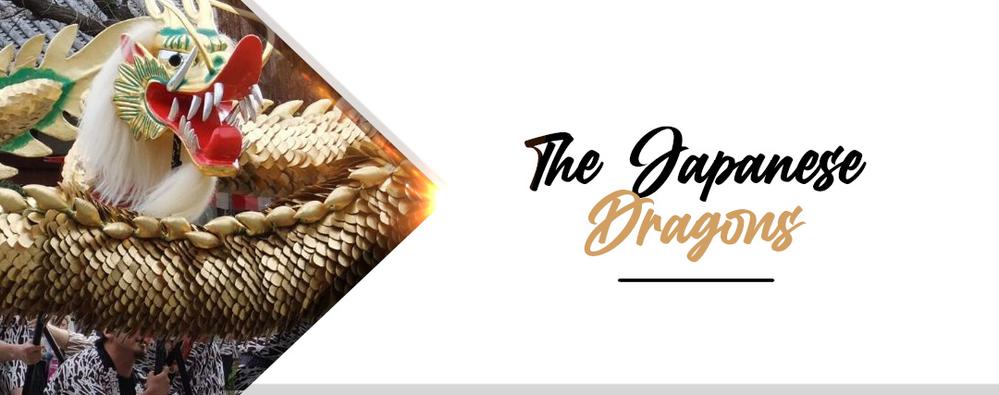
Far from our fire-breathing Western dragon ????, the Japanese dragon is nonetheless a fascinating and emblematic creature of the Land of the Rising Sun. It occupies an important place in Asian mythology where many legends refer to this force of nature.
The Japanese dragon, also called ryū (龍) or tatsu (竜), is a serpentine creature that does not have wings, unlike the Western dragon. A symbol of strength and power, it is respected and honored in Japan.
Are you ready to learn more about this majestic legendary animal? ????
Let’s discover together the importance of the dragon in Japanese mythology, its origin, its meaning and its legends. But first of all, what can this oriental dragon look like? ????
The Japanese dragon in all its splendor
First of all, the Japanese dragon is known as one of the guardians of Buddhism. It appears in many religious buildings ⛩️ to protect deities, in the form of sculptures or paintings.
Animal of Chinese origin, the legends that accompany it originated in China before spreading throughout Asia
| Did you know that the dragon has the particularity of possessing a sacred pearl, hidden in its throat, which gives it all these powers? Very appreciated by men, it brings happiness and wisdom to the one who holds it. ???? |

This mythical animal has a long serpentine body covered with scales and no wings. Its appearance resembles a cross between several animals with a reptile body, tiger legs, eagle talons, a hairy camel head, ox ears and deer horns. His demonic eyes added to his ferocious look. However, unlike its Chinese cousin, the Japanese dragon has only three claws instead of five.
Before becoming a dragon, the creature goes through several stages of development that take thousands of years. It starts out as a snake ???? before mutating into a carp ???? then a few centuries later, it acquires its famous goatee before growing clawed legs and a tail. At the end of this long metamorphosis, it will develop horns to discern sounds and finally, a crest allowing it to fly as an adult.
Known for its long life, this reptile lives mainly in the aquatic environment, which is why it is often depicted in water throughout Japanese artworks. ????
According to Japanese mythology, this creature has the supreme power to metamorphose, lengthen its body or even become invisible. It can also take on a human appearance (as in the film The Voyage of Chihiro).
If he can fly, it is not his main power because he is more like a snake than a bird. So we are far from the stereotype of the European dragon, flying in the air, with its gigantic wings and spitting fire.
Origin of the Japanese dragon
The Japanese dragon has its origin in the legends of the genesis of the universe. Shortly after the creation of heaven and earth, 7 generations of kami (Japanese gods) were born. The dragons would have appeared with other creatures to protect them, as guardians of the celestial deities.
In Japanese mythology, they are said to rule the oceans and fight to defend the gods. ????

There are 5 types of dragons:
- The celestial dragon, guardian of the kami
- The spiritual dragon, god of wind and rain
- The terrestrial dragon, guardian of rivers and oceans
- The treasure defender dragon, guardian of the precious stones
- The imperial dragon, symbol of the Chinese dynasty
Symbolism of the Japanese dragon
Just like nature whose strength, power and unpredictability it embodies, this reptile can be dangerous for the average person.
However, the dragon is above all a sign of good omen and is generally benevolent. Moreover, it brings happiness, wealth ???? and success and symbolizes wisdom, perseverance and immortality in the Japanese mind.
In Japan, the dragon is implored to attract rain, nourishing the land. ????️
Japanese legends around the dragon
In the Kojiki, an ancient book published in the year 712, which contains many legends about the origin of Japan and the Shinto deities, several myths revolve around the dragon. The most famous of them are certainly the legends of Yamata no Orochi and Watatsumi.
The legend of Yamata no Orochi, the oldest one
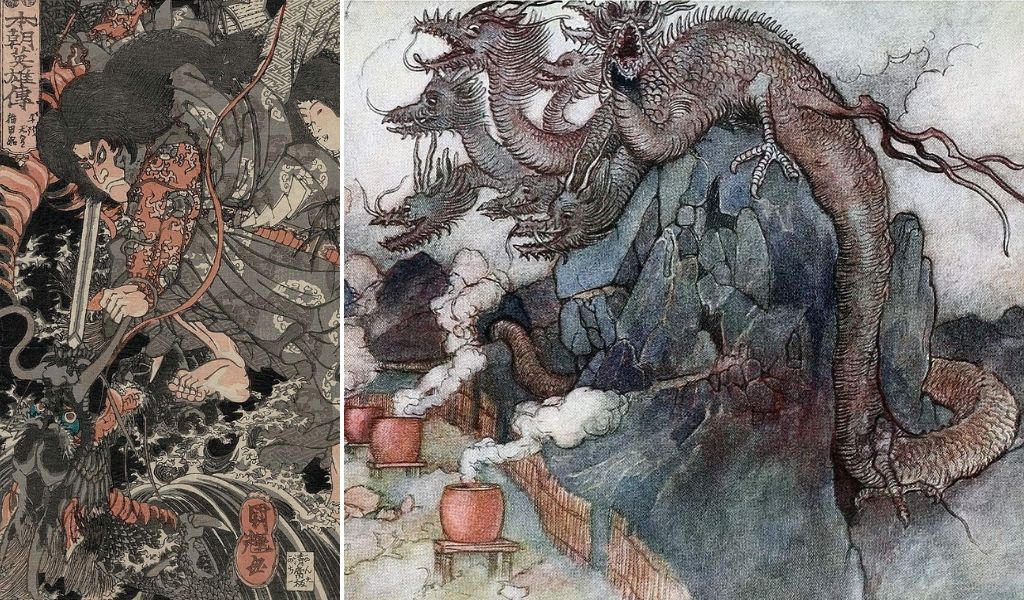
Yamata no Orochi also called Orochi was an evil creature with 8 tails and 8 heads, which roamed near the Hi river in the city of Izumo. Each of its heads represented natural elements such as water, earth, wind, fire, lightning, light, darkness and poison. His red eyes were reminiscent of the color of blood. His body was so long that it spread over 8 hills and 8 mountains. Impressive though! ????
On his back, you could see cypress trees and moss and on his belly rivers of blood. Legend has it that every year this dragon used to devour a young girl. All the inhabitants of the province of Koshi were afraid of this monster with its ferocious cruelty.
“One day when the king of Izumo was about to offer his eighth and last daughter as a sacrifice, to calm the beast, Susanoo, god of storms, proposed a pact: fight the dragon in exchange for the hand of the girl.
In order to defeat the dragon, Susanoo had to cunningly drop 8 barrels of sake to fool his enemy. Irresistibly, Yamata no Orochi drank every last drop of this divine drink before falling asleep.
It was then that Susanoo threw himself on the monster to kill him by cutting one by one his 8 heads. While cutting up his rival, he found inside a sacred sword called Kusanagi no Tsurugi, which he later offered to his sister Amaterasu, goddess of the sun.”
One can imagine that this story actually reflects the human sacrifices made in the past to appease the wrath of opposing tribes and that the sword thus found in the body of the dragon represented the long-awaited acquisition of a formidable weapon to overcome a trying battle.
The story of Watatsumi, the Dragon King and God of the Sea
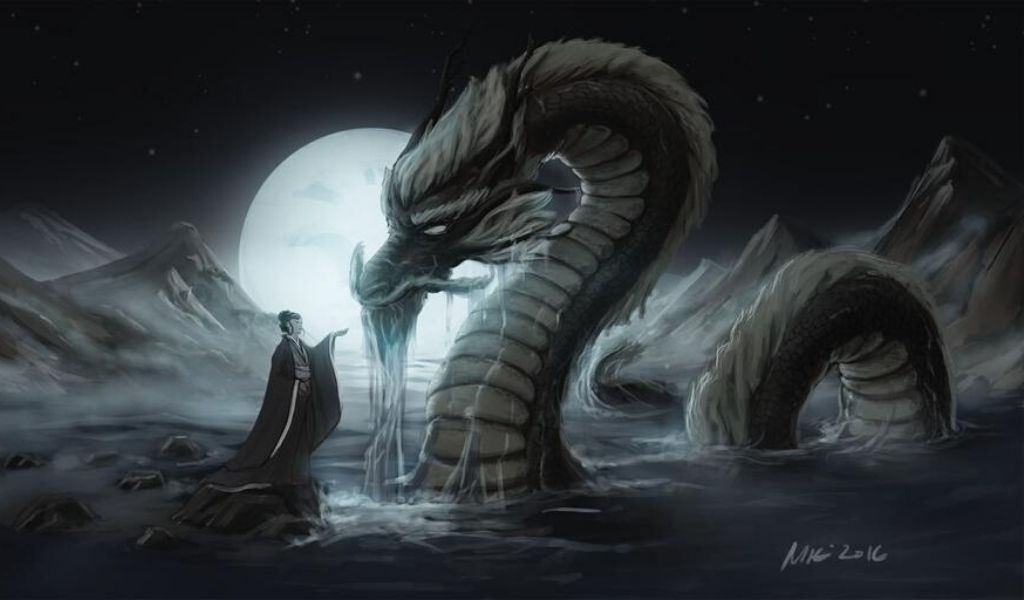
Watatsumi, also called Ryujin, is the dragon king and great god of the sea and oceans. This dragon is recognizable by his colossal size and his long mustache. He is master of the tides and governs all aquatic species. Generous, the king welcomes the shipwrecked in his magnificent underwater palace.
“One day, one of his beautiful daughters named Otohime met Hoori, a human who was roaming the sea in search of a hook. The two fell in love and decided to live together in Watatsumi’s palace.
After several years, Hoori, suffering from boredom, wanted to come back to live on earth but he was afraid of his brother’s reaction when he learned that he had not found his hook. The king, being benevolent, decided to summon the servants of his kingdom to ask them if they had seen the sought-after object. Luckily, a fish had just nibbled it. ????
Hoori was then able to return to his beloved land accompanied by his wife the dragon goddess.”
According to the legend, their grandson became the first emperor of Japan. That is why it is said that emperors are descendants of the kami.
The myth of Ryujin and the jellyfish, a funny story
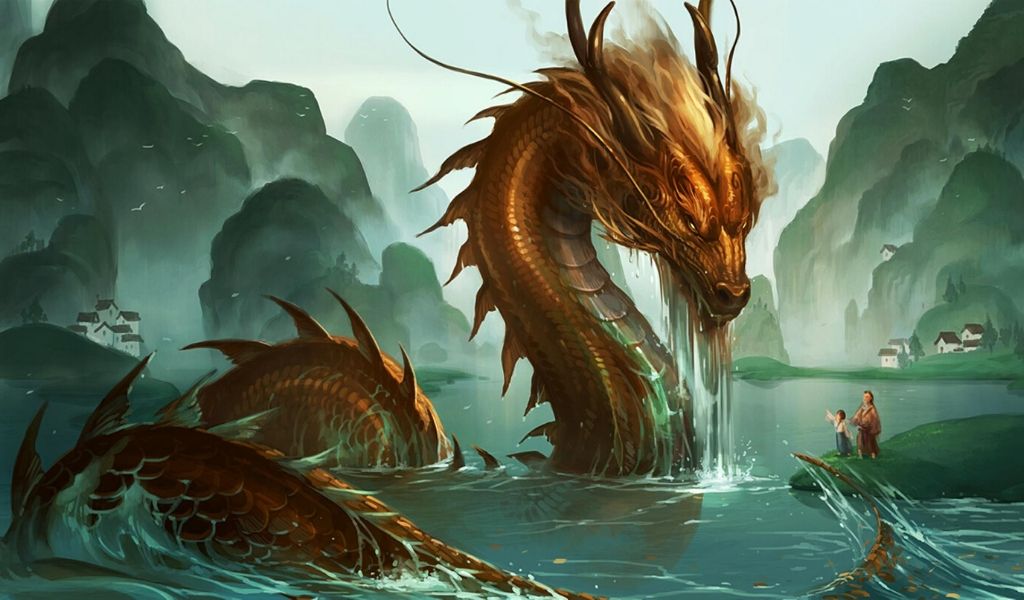
There is another legend involving the god of the sea, Ryujin.
“When his daughter was suffering from an incurable disease, Ryujin asked the jellyfish to bring him a monkey liver. At that time the mollusk still had bones and legs.
The jellyfish complied and went in search of the mammal. When he found the monkey, the latter told him that his liver had been stolen. The jellyfish came back to its king with nothing.
Ryujin quickly realized that the monkey had mocked them and, in anger, he crushed the jellyfish with all his weight.”
Since then, the jellyfish resembles the mollusk we know today, flat in shape and lacking bones. ????
The importance of the dragon in Japanese culture
Every year in spring, the Japanese honor dragons in Tokyo during Kinryu no mai, a ceremony held at Senso-ji in Asakusa, the oldest Buddhist temple in the capital.
A golden dragon parades around the religious building, carried by 8 dancers. Its body is 18 meters long and has no less than 8888 scales. That’s a lot of 8, all that! Not surprising because it is a fetish number for Buddhists. The golden dragon also makes its return to Tokyo on October 18 during the Chrysanthemum Festival.
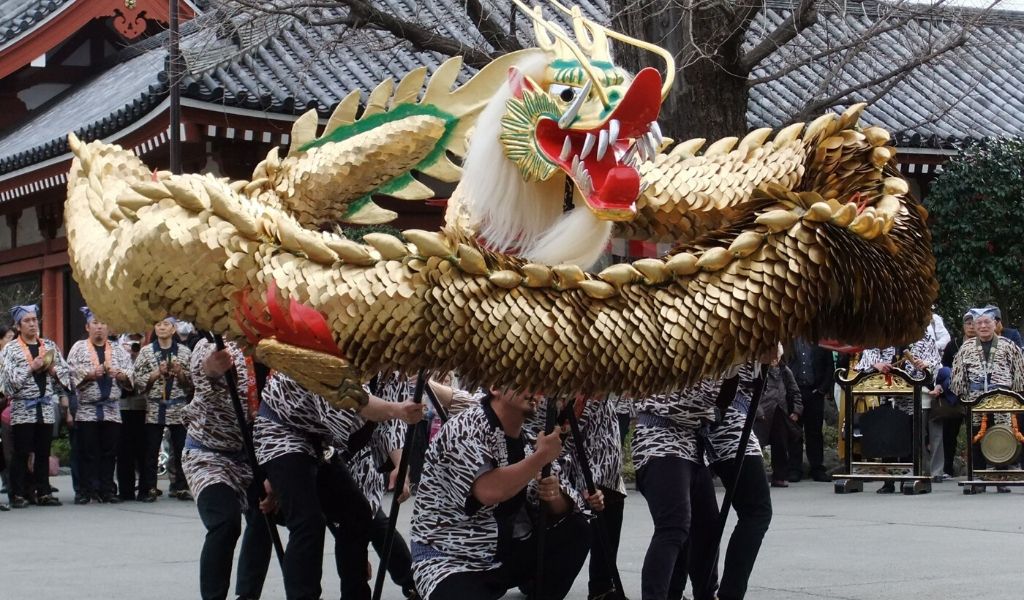
If you visit the beautiful country of Japan, keep your eyes open, you will probably see dragons in the Shinto buildings, located near the rivers.
Moreover, the Itsukushhima sanctuary located on the sacred island of Miyajima and classified as a UNESCO world heritage site is a remarkable place, very famous in Japan, where dragons are implored. Finally, if you visit a Zen Buddhist temple you will certainly see them on the ceilings.
Meaning of the Japanese dragon tattoo
The dragon is a very common tattoo theme around the world, thanks to its strong symbolism, mythical character, astrological connotation and majestic appearance.
We all agree that a dragon tattoo commands respect. Wise and benevolent, this mythical creature is nonetheless unpredictable and dangerous if you provoke it. Do you share the same character? Maybe this tattoo is made for you.
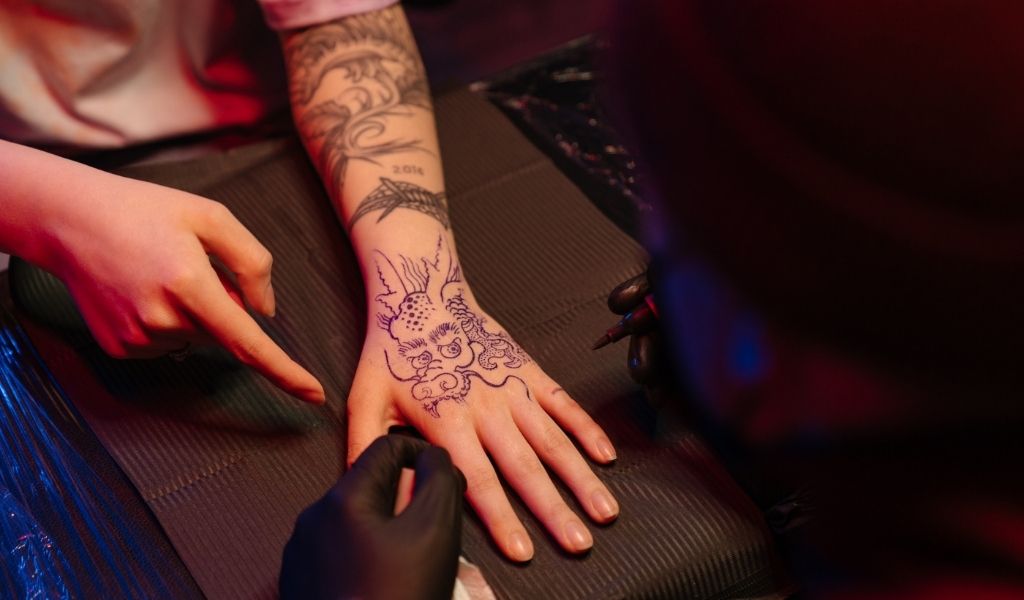
The Japanese dragon ryū no longer holds any secrets for you
All these events, legends, works and buildings in honor of Japanese dragons show how this extraordinary creature has been embedded in Japanese culture for centuries.
From now on, you can impress your friends by telling them the legend of Yamata no Orochi ????

